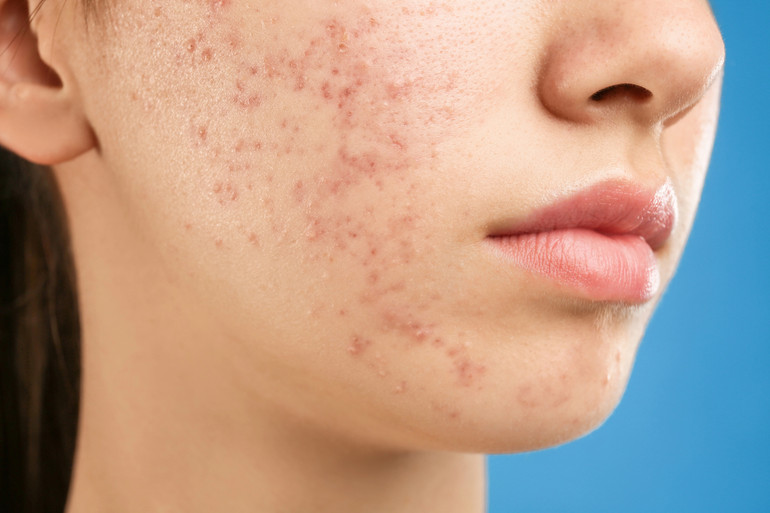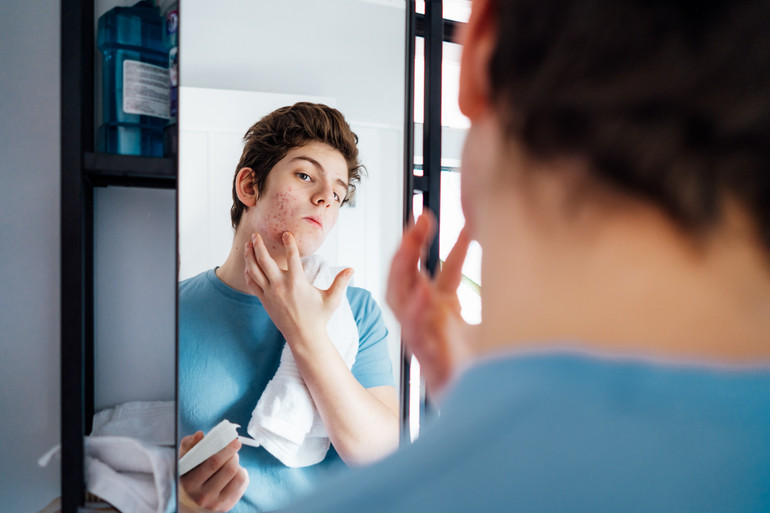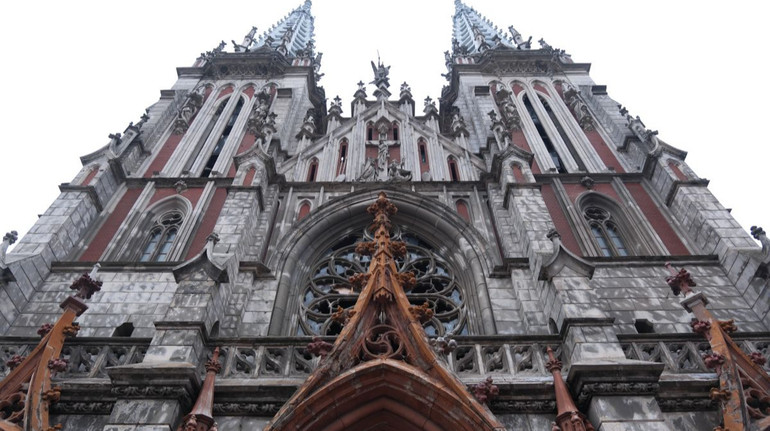Acne in adolescents: causes and methods of treatment

Pobert is a period of hormonal restructuring of the body, during which the activation of the sebaceous glands and the change in the microbiota of the skin. That is why rash is a common problem among adolescents.
If on the face More than 5 comedones (« subcutaneous humpbacks ») and inflammatory elements that pass slowly are a disease called acne. And it cannot be ignored.
How acne occurs, what are its features in adolescence and how this disease is treated – told « UP. Life » dermatovenereologist, candidate of medical sciences and co -founder of the community of Ukrainian doctors sviy.doc community Victoria Mironyuk.
How and why does acne occur?
Acne is a chronic inflammatory skin disease that is accompanied by acne. Its reason is four factors:
-
hypereseborea – excess sebum;
-
hyperkeratosis – improper weaving of keratinocyte cells in the hair follicle;
-
corinebacteria acne;
-
inflammation.
Hyperceborrhea and hyperkeratosis cause « microblas », called microcomedes. The sebum accumulates and macro -comedones – closed or open. Then Corinebacteria acne plays its role.
« Everyone on the skin has a microbiota, which consists of a large number of bacteria, fungi, ticks, etc. They have a protective function, and therefore have to be there. However, some inhabitants of the skin are conditionally pathogenic. And if the environment becomes favorable for them, many sebum and epidermis cells appear.
Then Corinebacteria acne, which are localized around the mouth of the hair follicles (pores), increase their number and enhance inflammation « , – explains the dermatologist.
The main causes of acne are genetics and hormones.
If parents have this disease, there are approximately 20-30% probability that their children will also occur. Therefore, the genetic factor does not always work.
The main causes of acne are genetics and hormones.
Newafrica/Deposiphotos
Hormones are an important factor in the period of puberty. The cause of the sebaceous gland is an increase in the level of male sex hormones, namely testosterone and its derivatives. But this does not mean that acne only occurs in guys.
In girls in adolescence, the menstrual cycle is formed, and its various phases can increase the number of androgens. Also, the level of male hormones is influenced by stress, namely – cortisol.
Additionally, some foods are also capable of provoking acne, especially with a high glycemic index, such as sweets, fast food, fast carbohydrates and dairy products. However, it is only an individual tendency.
« Acne triggers can also be improper care or absence. For example, if a teenager with oily skin will use dense or improperly washed makeup-it is all capable of aggravating rash. In addition, there are various mechanical factors, such as constant support of a certain area.
But not always these triggers work. Sometimes it is just a disease, and cleaning all these factors will not produce any result « , – says Victoria Mironyuk.
What are the forms of acne?
There are three clinical forms of acne:
-
comedonic – with the formation of closed and open comedones;
-
papulose-rashes in the form of papules (red inflammation under the skin) and pustules (purulent inflammation on the surface);
-
Cystic, or conglobate – in addition to comedones, papules and pustules, large nodes and cysts are formed deep in the skin.
There are no stages in acne, there are only degrees – light, medium and heavy.
Teens are dominated by comedonic acne – when there are more non -inflammatory rash elements on the skin. The guys are more prone to severe forms with the formation of nodes.
Due to the peculiarities of the sebaceous glands of acne on the face of adolescents, it is often localized in the upper part – on the forehead and cheeks. In adults, rash usually « descends » to the lower third.
Acne can also occur on the back and chest.

To the difficult forms of acne are more prone guys
Okrasyuk/Getty Images
How to treat teenage acne?
The methods of treatment of adolescent acne are no different from adults. Only a dermatologist does his appointment.
Treatment can be topical (local application of skin products) and systemic (tablets).
Topical treatments include:
-
acids – salicylic and azelic;
-
antiseptics – benzoyl peroxide;
-
retinoids – adapalene, tricotinoin and trifaroten;
-
Antibiotics – clindamycin (only briefly used).
Systemic antibiotics of the tetracycline and antiandrogens can also be prescribed for the treatment of acne – for girls for hormonal rash.
Severe and medium acne forms are treated with systemic retinoids – isotretinoin -based drugs. They are prescribed from 12 years. These are strictly prescription drugs whose doses and time are calculated for each patient separately.
Clinical examinations and laboratory examinations should be undergoing systemic retinoids before starting treatment. When administered, a number of tests, including liver enzymes, cholesterol and blood lipids, should be performed periodically.
Mechanical cleaning does not treat acne, but can be prescribed in some cases in combination with therapeutic agents. The same applies to chemical peels and hardware procedures.
« The teenage period is very delicate, because during it there is a formation of personality, confidence, social relationships. This is very influenced by a psychological condition that can be greatly impaired. Therefore, parents do not need to ignore the problem and see a doctor in time to prevent scars and complexes, » – Victoria Mironyuk emphasizes.
Rash in adolescence is not always a sign of a disease that will last for decades. But the tendency to them even after active therapy in adolescence can be preserved.
Acne is not adjusted to the beginning of sexual life, pregnancy, childbirth, the rejection of certain foods or habits. Therefore, if the rash occurs – they should be treated.






